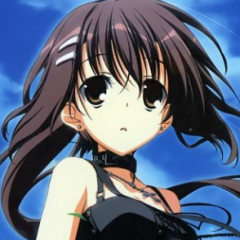Leaderboard
Popular Content
Showing content with the highest reputation on 01/02/20 in all areas
-
2 points
-
I don't like what they did to VNDB at all, they made it more complicated than it needed to be, it was perfectly fine before this unnecessary change.2 points
-

Notes on the past and hope of Japanese visual novels.
Chronopolis reacted to MayoeruHitori for a blog entry
Welcome to my blog. Where have we been? Where are we going? TIMELINE 1980s: - Early eroge largely consist of still art (what we call pixel art now), very short dialogue/narrative elements, and some primitive interactive elements, while spanning many genres. 1990s: - The point-and-click adventure game, which has its roots in 1980s video games, establishes itself as one of the most popular genres of eroge. Many games emerge which have interfaces that are visually similar to those of most point-and-click adventure games, but with gradually differing gameplay. These games are all collectively called "adventure games" or "ADV" in Japanese. The general style of having an interface which consists of a rectangular text box at the bottom of the screen, and a collage of visual elements meant to serve as a guide for what the main character sees, is also called "ADV". In other words, ADV becomes a genre that embodies a style of presentation. - The non-adult game company Chunsoft puts out Otogirisou, a kind of illustrated story in which pictures are placed in the background as visual aids while the full narrative is conveyed as overlaid text. This style of presentation is called a "novel game" or "NVL" in Japanese. The gameplay of Otogirisou purely consists of the player making choices on where to take the story, similar to "Choose Your Own Adventure" books, a simple yet powerful narrative tool which would prove influential to ADV as a whole. - Two major eroge brands that specialize in ADV, elf and Leaf, create popular games like Doukyuusei and To Heart. These games stand out from their competitors by the way they utilize talented artists and writers to focus on the personalities of charming heroines, rather than treating pixel porn as what matters and the characterization as an afterthought. This character-centric evolution is called a charage (character game) and encompasses both NVL (like Kizuato) and ADV. And with the release of YU-NO and Kamaitachi no Yoru, two ADV/NVL games that have well-written stories, the term scenarioge (scenario game) becomes more popular. 1999: - Kanon is released by Key. It's the first time a large number of players became very emotionally moved by the story of an eroge, or any ADV at that. Even someone like Baba from Visual Arts, who was just a businessman without much personal interest in ADV, became interested after Kanon. Aside from inventing the nakige (naki game, which means "crying game") genre, it awakened in players a desire for longer scenarios as necessary to deepen their attachment to the heroines. But its most significant role is being the first major moege (moe game) at a time when the term "moe" wasn't even very well known. 2000: - The doujin NVL Tsukihime comes out, and its quality lets it rank among the very top, if not at the very top, of both scenarioge and charage. See Popular Views on What Defines the Chuuni Genre for more info on the influence of Type-Moon's works. 2000-2006: - Now that Kanon and Tsukihime have come out, it seems like a dam bursts and a flood of popular and influential ADV/NVL are released. There are comparatively fewer in 2001, with the most notable ones in my mind being Kiminozo and Kazokei. But in 2002 you have Ever17, Higurashi, Kusarihime, Baldr Force, Hello world, Da Capo, and others. And every year after that just has more and more top quality ADV/NVL. The biggest year is 2004, which sees the release of both Clannad and Fate/stay night (successors to Kanon and Tsukihime, respectively). - Around the middle of the decade, the term "visual novel" is invented among English speaking fans of these games, and basically refers to any game which has an ADV/NVL-style interface and a strong and constant narrative. Since the rest of the world directly bypassed the early history of Japanese eroge and ADV/NVL, they didn't bother with the origins of these styles of games, and just chose a term which seemed to more naturally describe the most famous and representative ADV/NVL. Since then, the term "visual novel" has been recognized by the Japanese too, although the broader Japanese playerbase still commonly thinks that VN is synonymous with "adventure game". In any case, the term is excellent and I like it. - Over the course of this decade, the major tropes and popular genres of VNs, which were mostly foreshadowed in the late 1990s, are firmly established and standardized. They include TIPs, unlockable routes/end, true ends, bad ends, hidden heroines, time loops/leaps, moe, chuuni, nakige, utsuge, imouto games, and many more. The diverse and awkward gameplay of the 1980s and 1990s more or less disappears. - Meanwhile, many of the most successful eroge companies like Key, Type-Moon, and Leaf/Aqua-Plus successfully rebrand themselves and reduce their focus on adult content for the sake of marketing their works to the rest of the Japanese "otaku" industries. They adopt the label of "bishoujo game maker". Many of their most popular IPs (intellectual properties) receive anime adaptations or evolve into multimedia franchises, with "Fate" being the most famous example. On the other hand, as these industries embrace VNs, they also learn from them and try to emulate that same appeal within their own IPs; Fate/stay night is especially influential as a progenitor of the "chuuni" genre. 2006: - Statistically, eroge sales begin to decline. The industry itself doesn't immediately begin to decline, though, because investors take time to notice and react to such trends, companies are still in the midst of developing games, and they will try to shift strategies to fight the trend. The decline in sales won't slow down until 2012. WHY Causes of the trend? This was fiercely debated for years and still hasn't been completely settled. But it's more or less clear. VNs served as a creative outlet without rivals for several years. At first, in the early 1990s, nobody expect much from eroge. But as we entered the later part of the decade, that changed. Eroge was always a venue for weird and exciting scenarios that wouldn't be accepted elsewhere, and it was easier than ever to make quality audiovisual experiences, with multiple free or cheap VN engines available. Writers like Maeda Jun and Nasu took advantage of the medium's ease of entry, along with the freedom of expression it afforded. It was a fresh, mature alternative to the LN industry. However, that didn't last forever. Major publishers in other mediums distilled the parts of eroge that appealed most to players: the nakige components, the moe components, the fanservice and unapologetic harems, the handy sci-fi tropes, the balloon breasts. Everything except the deep emotional and mental investment that's only possible with literature. And of course, the mature themes and content. Above all, what VNs brought to the table was no longer as fresh to people. Without a sense of excitement, the fact that VNs require people to sit down and actually read continuously for hours became... problematic. The era of smartphones and social media also heralded the era of low attention spans. People came to think that "adventure games" = "boring". This was coupled with the fact that more and more people play bishoujo games on their smartphones, and who wants to play eroge in public? Waifu/husbando social games like Fate/Grand Order and Granblue Fantasy dealt especially heavy blows to players' interest in VNs. They let players pick between countless more waifus and husbandos than VNs, have more exciting plots to engage casual players (not some ordinary school life drama), have the slutty outfits and exaggerated figures of nukige heroines, continually put out new content for the most popular characters, let you put your waifu/husbando in your home screen so you can constantly look at her, and tap on the portrait of her/him to hear some flirty line voiced by a popular anime seiyuu. They even copied the feature of some VNs where you can give your favorite hero or heroine chocolates on Valentine's Day or White Day. The proof is in the recent anime Chuubyou Gekihatsu Boy where the "guy who's only interested in 2D girls" stereotype no longer involves VNs on a PSP, but rather depicts a social game on a phone. To be frank, even the latest Fire Emblem game probably makes VNs less appealing by comparison. The main draw of VNs was always the cute and flirty heroines and romance, but these elements have been thoroughly exported. The exact same situation arose with Japanese web novels on the site Shousetsuka ni Narou. An initial wave of authors pioneered new genres with certain distinctive tropes, most of them related to isekai, and started a trend which has dominated the Japanese web novel scene. But the mainstream LN industry quickly learned and started to put out its own isekai LNs, as well as aggressively recruit these authors (who naturally didn't object to being paid for what they'd initially put out for free online). A few years later, Narou's talents have more or less moved out, and the stories at the top of the popularity charts haven't been supplanted by any new talents. In any case, the major difference between Narou and the VN industry is that Narou authors are overall much better off with editors, whereas the transition from VNs to LNs/anime is absolutely a creative downgrade. WHAT DO 1. Copy FGO. Social games are a natural evolution of the appeal of many VNs. Unfortunately, they're also largely vapid experiences with have less voice acting, silent protagonists, a massive cast of heroines who receive little character development, a disjointed narrative, a story that's mostly dialogue and constantly interrupted by battles, and many other flaws that prevent them from achieving literary excellence. These games have invariably underestimated how popular they'll become and worked with cheap art assets and flimsy storytelling, only to fix this by hiring better artists and writers for the more recent arcs of their ongoing main storylines. However, even those recent arcs are still shallow experiences compared to VNs. The best they can do is have good comedy--no one will ever feel as empathetic toward the characters as they do in VNs. But of course, despite the problems with social games' storytelling, they are still... inevitable. They will still successfully rake in cash from people with personalities prone to gambling addiction. So one VN company after another has tried to become the next FGO. Eushully, light, August, Key, Lilith, Frontwing, Nitroplus and many others have pursued social games, virtually all of which failed to really take off like FGO--in part because they weren't very well-made, and in part because the Fate franchise is more popular with more devoted fans. Frankly, this solution has been thoroughly pursued by all sorts of VN companies, and we know exactly what happens: it fails unless they're very lucky. 2. Give up. This is a wise and fine choice. The river of life flows ever onward. Sometimes it's best to accept defeat. 3. Make NOT a visual novel. Be Kodaka Kazutaka. Start from the idea that you want to make an adventure game. Then to appease your producer, call it a detective game instead, and add a 3D world with gameplay that takes place within it while occupying a lot of the player's time, so it in no way feels like a pure ADV. Make the narrative largely dialogue-driven. Write in a way that wastes less time on subtlety and imagery and takes more advantage of humor, twists, and action. Then call it Danganronpa and be successful, while feeling that you tricked the world by making an adventure game with the quality storytelling of an adventure game that doesn't feel like an adventure game. Too Kyo Games plans to water down a full-fledged ADV-quality scenario with meaningful realtime gameplay, by partnering with studios that actually know how to make fun games. It's a long-term experiment on tricking people into playing adventure games. 4. Make a visual novel, but be better. Find a slightly new angle. Gather the A-Team. Target non-traditional markets. Cultivate one's prestige. In short, reorganize and rebrand. But still make a visual novel, with ordinary 2D art and probably little to no gameplay. The only problem is that people don't like VNs anymore because smartphones shrunk their brains until they had flea-sized attention spans. So at best, such "better" VNs will simply exist in the top tier of modern VNs, able to survive and maybe make a little profit. These are VNs for the sake of creators who want to stay in the VN industry despite how comparatively little it pays. Aniplex.exe, a new VN brand started under Aniplex that Makura staff like Sca-ji are involved with, seems to fall under this category. They're identifying as makers of "novel games" probably because that sounds more respectable these days than bishoujo game. I'm frankly more interested in Sca-ji's other still unannounced projects (but that's just because I'm not personally a fan of Konno Asta or Umihara Nozomu). 5. Copy FGO, but EVOLVE. Before Light's "Pantheon" mobile game died mid-development, Masada planned for it to have a substantial scenario. That kind of story would fatally clash, like matter and dark matter, with social games as they exist today. Unless they rethought the entire premise from scratch, I assume they'd have to at the very least dilute such a lengthy narrative into segments with constant breaks, rewards, and mini-games. And they'd have to make a tough choice about whether they seriously want to market it for smartphones, or stick to PC like Granblue Fantasy. It's easier to not evolve or just give up. But moreover, I think industry veterans are just pissed off and unable to accept that something as amazing as VNs can't find its consumers anymore. So they will struggle. Visual Arts will struggle, for sure. Key pretended to be half-dead in their 20th anniversary message, but they were actually hard at work. They've let Maeda take on the scenario of a high budget smartphone game called "Heaven Burns Red". Will he be able to do for social games with "Heaven Burns Red" what he did for VNs with "Kanon"? I'm not too optimistic, since I haven't seen any indication that the overall story concept was Maeda's. 6. ??? To quote Sca-ji, a writer who's qualified to talk about the unique worth of eroge, from late October: "People across various otaku industries have said, 'I want the wonderful culture of eroge to stay alive.' They're going out of their way and doing many things to make that happen. If I'm pessimistic, this might be our last chance to revive this industry, so I'm cheering them on. Do your best. ... People around their late twenties to thirty years old have started to take positions of power in society, praising eroge and doing many things for us." ZZZ 「Kanon」や「CLANNAD」「Angel Beats!」など…「泣きゲー」からアニメ原作まで、美少女IPを仕掛け続けた28年! ビジュアルアーツのユニークなブランド戦略と経営思想を馬場隆博社長に聞いてみた 『ダンガンロンパ』、『東京クロノス』、『グノーシア』の開発者が語る。「アドベンチャーゲームは滅ぶのか?」緊急座談会 「なぜエロゲ業界は衰退してるのか」 それをまとめた画像が話題にwwwww https://twitter.com/gannbattemasenn/status/1015644154271973376 https://enty.jp/avestan https://twitter.com/sca_di https://vndb.org/ EPILOGUE A new decade is upon is, and we're in the midst of a wave of 20th anniversaries that inevitably prompt retrospection. What I'm keeping an eye on, out of concern for the industry, as we enter it: - Too Kyo Games - Heaven Burns Red (unveiling on February 28) and Visual Arts as a whole - Sca-ji's Twitter account - Aniplex.exe as a whole - Any news from Masada about new publishers for Pantheon - Major non-adult scenarioge companies like Spike-Chunsoft and Mages (they may absorb some talent or try to carry on eroge culture) - Any actual new VNs from Nasu, like the Tsukihime remake ADDENDUM I: A Note on Death VS Decline (added 1/28)1 point -

inquiry evenicle
bogdankl reacted to Mr Poltroon for a topic
Trust Zakamutt over me. I have no trust in my memory of the particular scene or even others. (Zakamutt, you preferred to write 'previous poster' rather than alter the name. Astonishing.)1 point -
1 point
-
1 point
-
Protagonist customization was common in the early parts of the 2000's but went out of fashion for obvious reasons... Innovation was pretty much nonexistent in JVNs in the last decade, though some companies did venture a little out into the wilderness with art or weird gimmicks. That's no surprise, though... It would be strange if the Japanese innovated in anything when it comes to VNs, since most 'innovations' in JVNs tend to create fan backlash. The only thing that can really be construed as an innovation in JVNs was the inclusion of more evolutions of the e-mote system, though the system itself is more annoying/distracting than anything else. Edit: Sorry, didn't mean to be short... but protagonist customization primarily got dropped because of how counterproductive it was in most cases to getting engrossed in the story-game. The only real remnant left from that is the generic harem protagonist who is so endemic to charage in general. Similar to the 'silent protagonist' in jrpgs, most fans of the medium look on excessive self-insert elements as a negative factor when deciding to buy a game in Japan.1 point
-
BTW, while this new system is extremely inconvenient as it is now, it made me realize how huge my backlog already is thanks to the counters next to the labels. It turns out that I have 92 unread VNs (that means games that I already have on my PC), and additional over 200 "bookmarked" on wishlist Even removing those with "low" priority leaves 54... Doubt I'll ever manage to read them all...1 point
-
yorhel himself admitted in the initial post that he sucks at doing UI, so hopefully he will improve it after sufficient feedback.1 point
-
i brought this up because one of the routes seems to kind of hinting that possibly one of the heroines might be the mc's mother just at a younger age. they havent outright said it but if its so, he isnt aware of that possibility and neither is she. as i was reading this i was wondering if there had ever been a vn where the mc was his own father through like time travel? i know this is fucked up beyond all reasoning but i mean, i fucked women versions of chris columbus, genghis khan, oda nobunaga, billy the kid, etc, etc because of a vn so its not entirely out of the realm of possibility.1 point
-
1 point
-
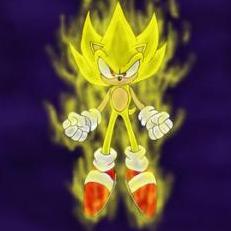
New Year Resolutions?
fujoneko reacted to Sonicboom2.0 for a topic
Two that I can think of is trying to go back ACT prep for College and try learning how to drive.1 point -
LMFAOOOOOO holy shit HAHAHA TOTAL bruh MOMENT om g lol haha my sides bro im experiencing heart palpitations this joke man dude this is EVERYTHING im lol my brain is deteriorating HAHAHA LOL1 point
-
1 point
-
@eplipswich I recognize that you have a life and the speed and quality of the translation/editing may not remain consistent. Thus I think it might be prudent to release the main story first and then a separate patch for the side stories due to the unknown release date. I probably wouldn't play the side stories immediately after finishing the main story; I'd take a break. Admittedly I've very eager to play it XD But that's just me. Idk if other people would be the same way. And of course it's up to you for how to release this. You've done absolutely wonderful work and I'm grateful for what you've done either way. Thank you!!1 point
-

Nukige x Nakige Discussion
alien51 reacted to NowItsAngeTime for a topic
The only thing that's both a Nakige and a Nukige at the same time is Wanko to Kurasou1 point -
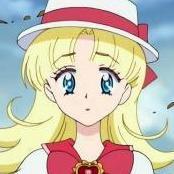
Dealing with unsatisfactory ending (craving!)
alien51 reacted to littleshogun for a topic
Perhaps I can suggest Hoshiori if you look into marriage ending here. Other than that, I guess I can recommend some other Smee VNs such as Makeover and Pure x Connect if you can read Japanese (For the info Smee is Fureraba's developer). I hope my recommendations here will be helpful to you.1 point -
If the ending isn't happy, it isn't a nakige. By definition, a nakige exists to make you cry then salvage the situation into a happy ending. If the ending isn't happy, it is an utsuge.1 point
-
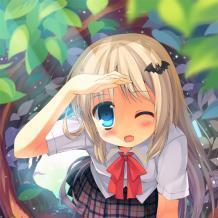
Dealing with unsatisfactory ending (craving!)
alien51 reacted to Noumi Kudryavka for a topic
I mean... That's what you sign up for when reading a nukige. The whole point of a nukige is to show and have sex for you to jerk off to. Nukiges only care about sex appeal, the little story that it has is to make it somewhat logical or coherent. Fureraba isn't a nukige, it's an eroge. Eroge - VN with sex scenes Nukige - VN where the purpose is the sex (and don't care about much else) Edit: Princess Evangile (https://vndb.org/v6710) and PE W Happiness might be something for you. Or, if you like moe, Wagamama High Spec (https://vndb.org/v17823). Or anything made by Yuzusoft. I also very highly recommend Chrono Clock if you're looking for fulfilling character routes, but they don't include H-scenes. The h-scenes are separately unlocked after completing the respective routes.1 point




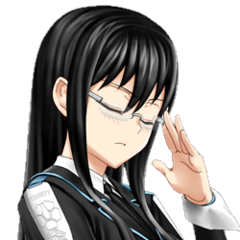
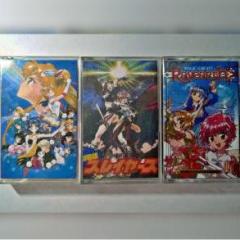

.thumb.png.ef80b4edeaf4f5215327e33be09f1628.png)
